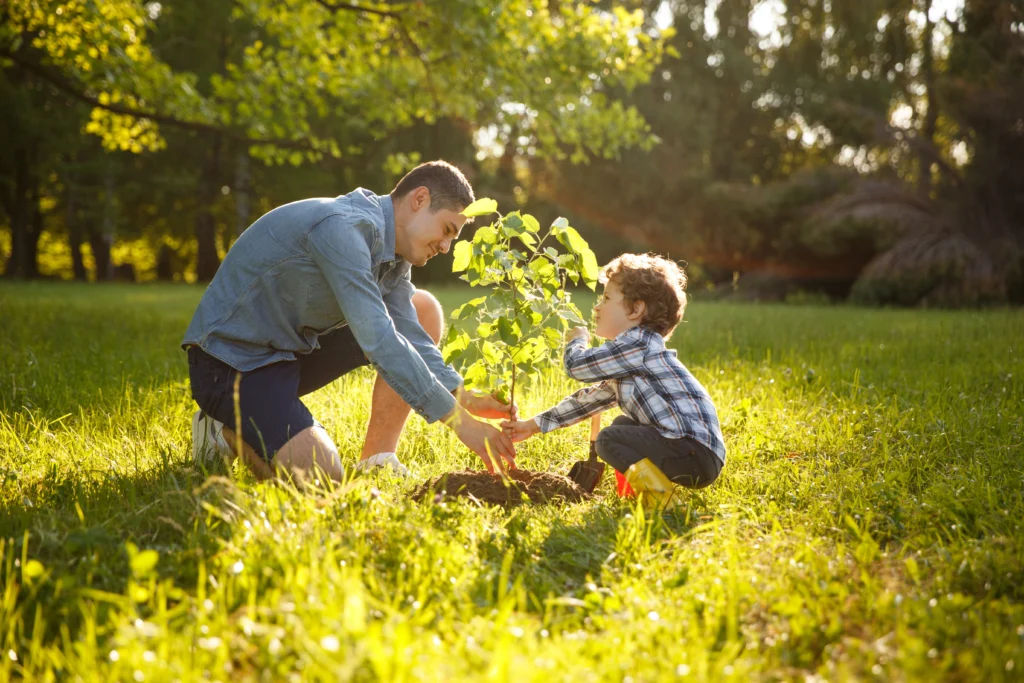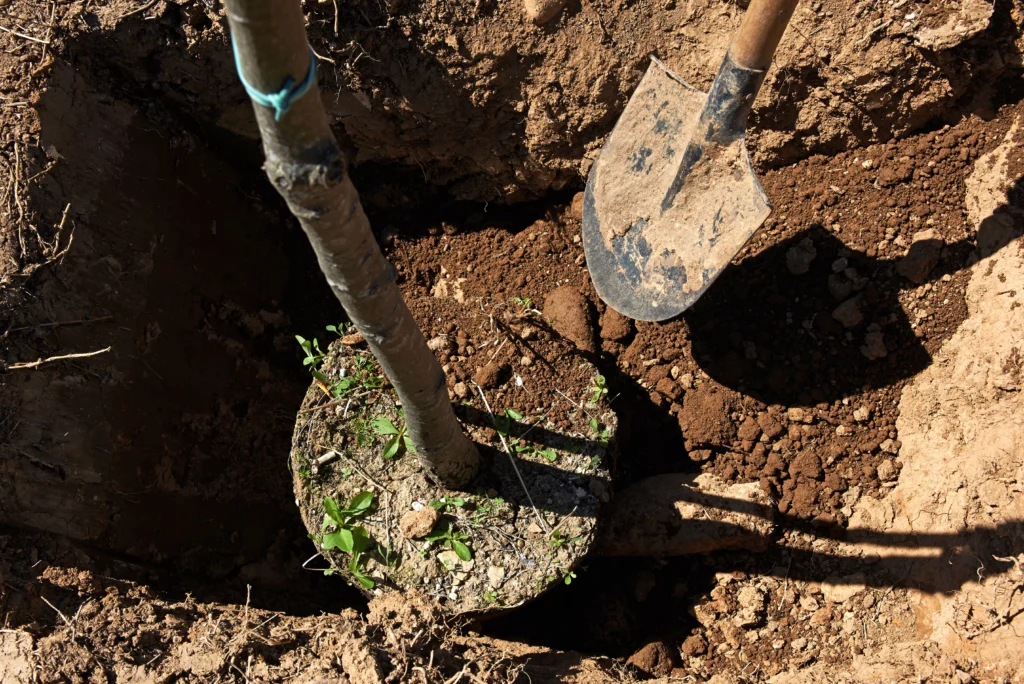
Planting a tree is a rewarding activity that enhances your landscape, benefits the environment, and can provide shade and beauty for decades to come in Edwardsville, IL. However, the longevity and health of a tree depend significantly on the steps taken during its planting. Here is a detailed guide on how to properly plant a tree, ensuring it gets the best possible start in its new location.
Choosing the Right Tree
- Select the Right Species: Consider the local climate, soil conditions, and the purpose of the tree (shade, ornamental, fruit-bearing, etc.). Research or consult with a local nursery to find a species that will thrive in your specific environment.
- Consider Size and Location: Think about the mature size of the tree in terms of height and spread. Ensure there is enough space for the tree to grow without interfering with buildings, power lines, or other structures. Also, consider sunlight requirements and drainage in the chosen location.
Best Time to Plant
The best time to plant a tree is during its dormant season—either in the fall after leaf drop or in early spring before bud break. This timing allows the tree to establish roots in new surroundings before the stress of heat and high water demands during summer.
Planting the Tree
- Prepare the Hole: Dig a hole that is two to three times wider than the root ball but only as deep as the root ball. This enables the roots to spread effortlessly into the surrounding soil. The sides of the hole should be sloped and roughened up to help roots break through.
- Inspect and Prepare the Root Ball: Before planting, remove the tree from its container and inspect the roots. If the roots are densely entangled, carefully separate them. If they are tightly bound in a girdling pattern, make vertical cuts to encourage outward growth.
- Positioning the Tree: Set the tree in the middle of the hole. The top of the root ball should be level with or slightly above ground level to allow for settling and prevent water pooling around the trunk.
- Backfill the Hole: Fill the hole with native soil (the same soil that was dug out), not potting soil or compost, which can discourage roots from growing beyond the hole. As you backfill, gently tamp down the soil to remove air pockets without overly compacting it, which can hinder root growth.
Watering Tips
After planting a tree in Edwardsville, IL, water the tree thoroughly to settle the soil and eliminate air pockets. Maintain a consistent watering schedule during the first few years.
Watering deeply and less frequently promotes the growth of deep roots.
Applying Mulch
Place a 2–3-inch layer of mulch around the base of the tree but keep it a few inches away from the trunk. Mulch helps retain soil moisture, suppress weeds, and regulate soil temperature.
Staking the Tree
If necessary, stake the tree to provide support. Avoid staking too tightly; allow some movement as this helps strengthen the tree’s stem. Remove stakes after one or two growing seasons once the tree is stable.

Ongoing Care
Prune any broken or damaged branches and check regularly for signs of pests or disease. As the tree grows, continue to ensure it has sufficient space, nutrients, and water according to its specific needs.
Need a company to help you take care of your trees in Edwardsville, IL? Call Merritt’s Tree Service today to learn more about our services.